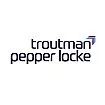On Tuesday, January 5, 2016, EPA partially approved and partially disapproved a revision to the Texas "regional haze" State Implementation Plan (SIP). The regional haze program is intended to protect and improve visibility at national parks and requires states to write plans for accomplishing those goals. While EPA has disapproved dozens of states' regional haze SIPs in the past, primarily based on the state's determination of "Best Available Retrofit Technology" (BART), this action simply defers EPA's decision on BART. Instead, EPA disapproves other portions of the SIP deemed inadequate to address requirements for "reasonable progress," "long-term strategy," and "the "calculation of natural visibility conditions." In an effort to address these alleged deficiencies, the rule includes a Federal Implementation Plan (FIP) that requires over a dozen electric generating units in Texas to achieve more stringent SO2 emission limits based on the installation of scrubber retrofits and upgrades.
EPA notes at the end of its rule that the policies and legal interpretations underlying it have "nationwide scope and effect." As a result, the disapproval of Texas' regional haze SIP likely foreshadows a significant shift in the manner in which EPA will use the regional haze program in the future to impose even more stringent emission control requirements on existing sources of visibility impairing air pollutants—including particulate matter, sulfur dioxide, and nitrogen dioxide—than it has in the past. Thus, other states could face similar treatment, even those that have already imposed BART controls on their largest sources (and perhaps even for those very same sources). Given that the next regional haze planning period is scheduled to begin in 2018, the strategy that EPA is now pursuing in Texas could be a taste of what is likely to come to the rest of the country soon. The final rule in its entirety can be accessed here.
The content of this article is intended to provide a general guide to the subject matter. Specialist advice should be sought about your specific circumstances.


